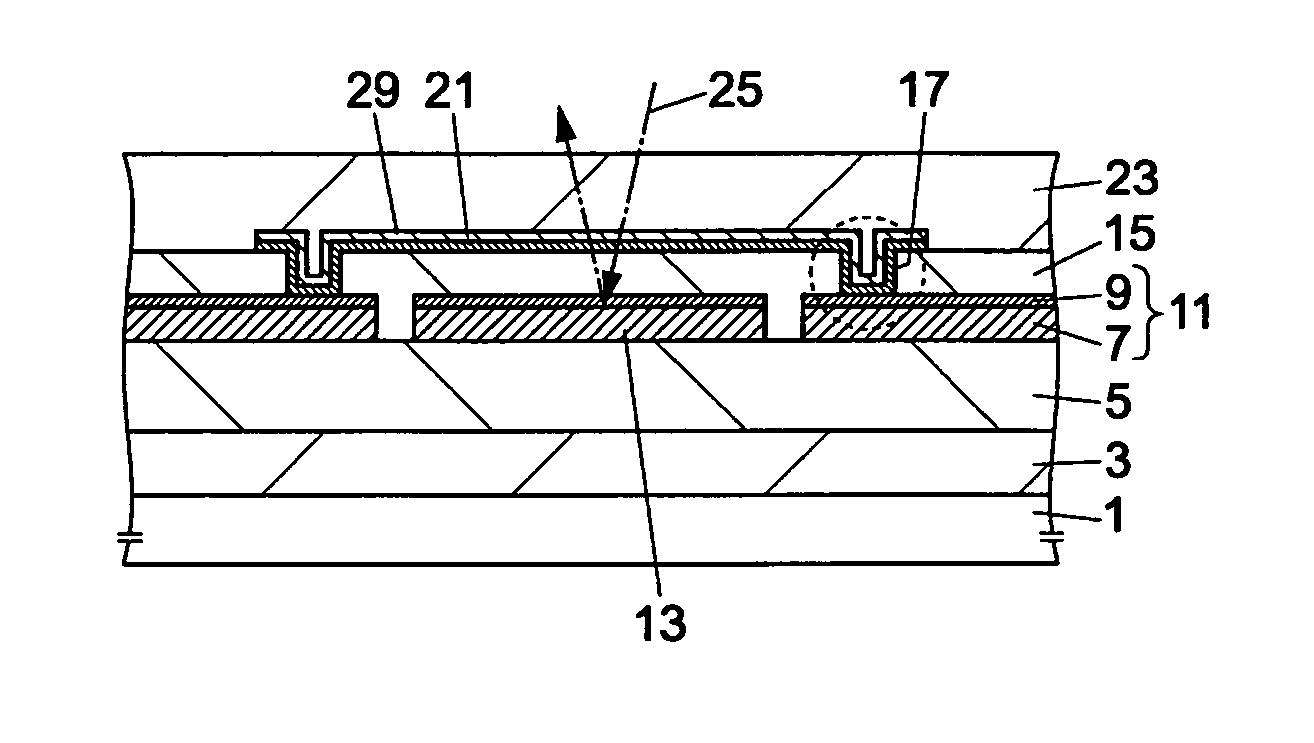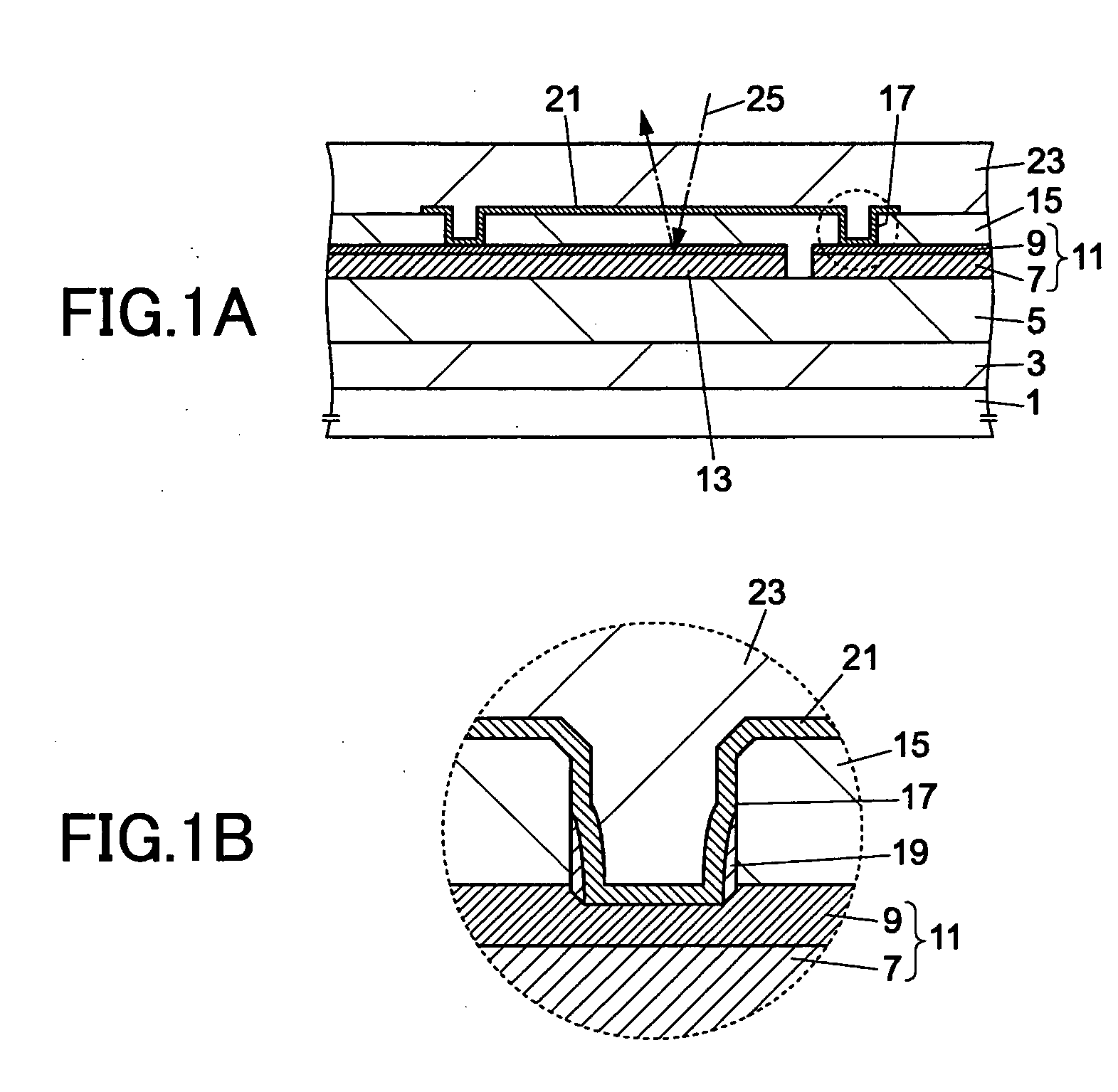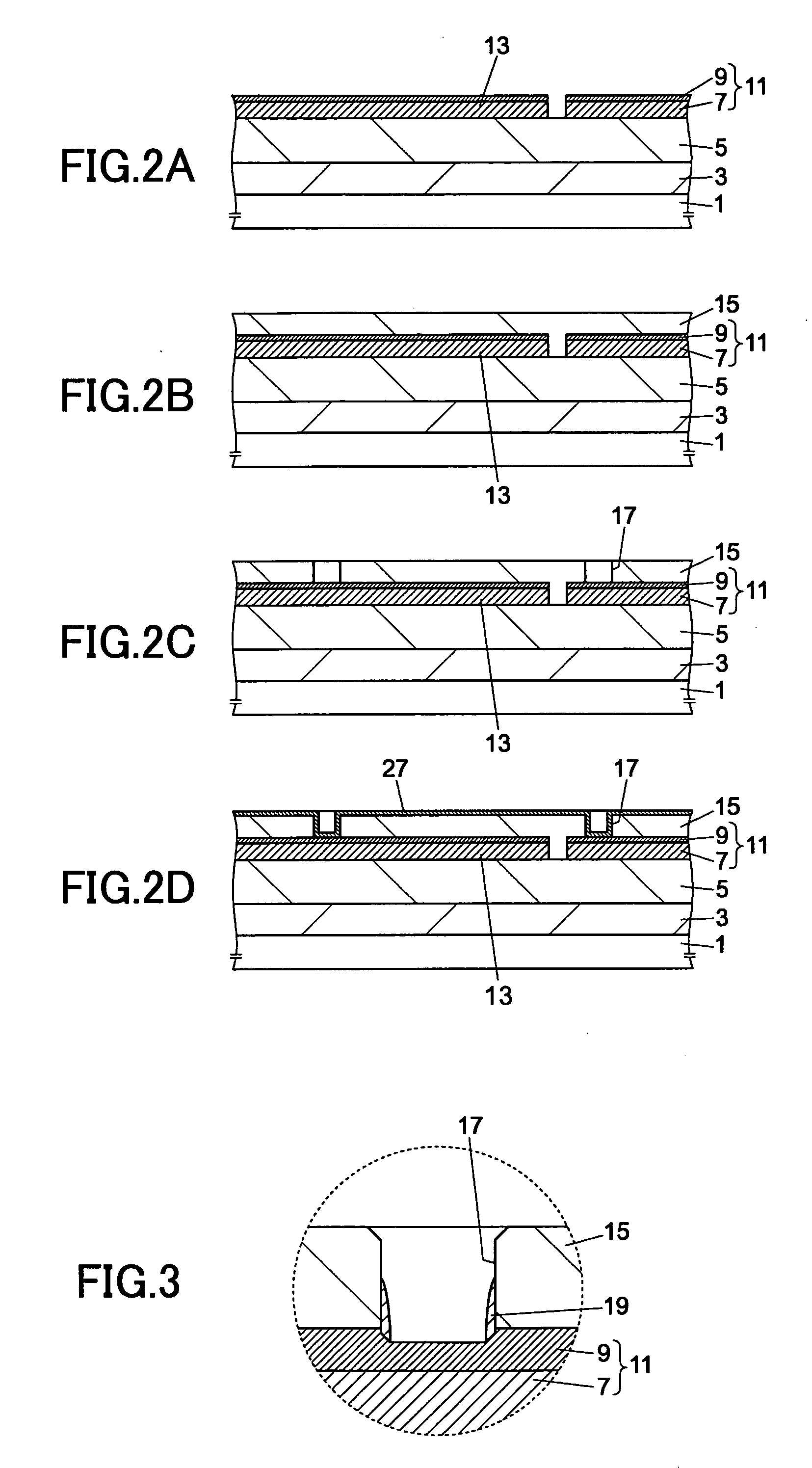Semiconductor device
a technology of semiconductor devices and metal thin films, applied in the direction of solid-state devices, semiconductor/solid-state device details, metal rolling arrangements, etc., can solve the problems of deformation of the reliability of the semiconductor device, deformation of the insulating film or silicon substrate, and induced electron-hole pairs in the silicon substrate, etc., to reduce the resistance value of the metal thin-film resistance on the underlying film, stabilize the resistance value of the metal thin-film resistance, and suppress the variation of the resistance value of the metal
- Summary
- Abstract
- Description
- Claims
- Application Information
AI Technical Summary
Benefits of technology
Problems solved by technology
Method used
Image
Examples
Embodiment Construction
[0158]FIGS. 1A and 1B are cross-sectional diagrams showing an embodiment of the first mode of the present invention wherein FIG. 1A is a cross-sectional view showing a region where a metal thin-film resistance is formed while FIG. 1B is an enlarged cross-sectional diagram showing a part of FIG. 1A circled by a broken line. In the embodiments described hereinafter, it should be noted that transistors or capacitors are formed on the same substrate while illustration thereof are omitted.
[0159] On a silicon substrate 1, there is formed a device isolation oxide 3, and a first layer interlayer insulation film (lower insulation film) is of BPSG (borophosphosilicate grass) or a PSG (phosphosilicate glass) is formed on the silicon substrate 1 including the region where the device isolation oxide 3 is formed. Further, a first layer metal interconnection pattern 11 of a metal pattern 7 and a refractory metal film 9 formed on the metal pattern 7 is formed on the first layer interlayer insulati...
PUM
| Property | Measurement | Unit |
|---|---|---|
| thickness | aaaaa | aaaaa |
| thickness | aaaaa | aaaaa |
| thickness | aaaaa | aaaaa |
Abstract
Description
Claims
Application Information
 Login to View More
Login to View More - R&D
- Intellectual Property
- Life Sciences
- Materials
- Tech Scout
- Unparalleled Data Quality
- Higher Quality Content
- 60% Fewer Hallucinations
Browse by: Latest US Patents, China's latest patents, Technical Efficacy Thesaurus, Application Domain, Technology Topic, Popular Technical Reports.
© 2025 PatSnap. All rights reserved.Legal|Privacy policy|Modern Slavery Act Transparency Statement|Sitemap|About US| Contact US: help@patsnap.com



